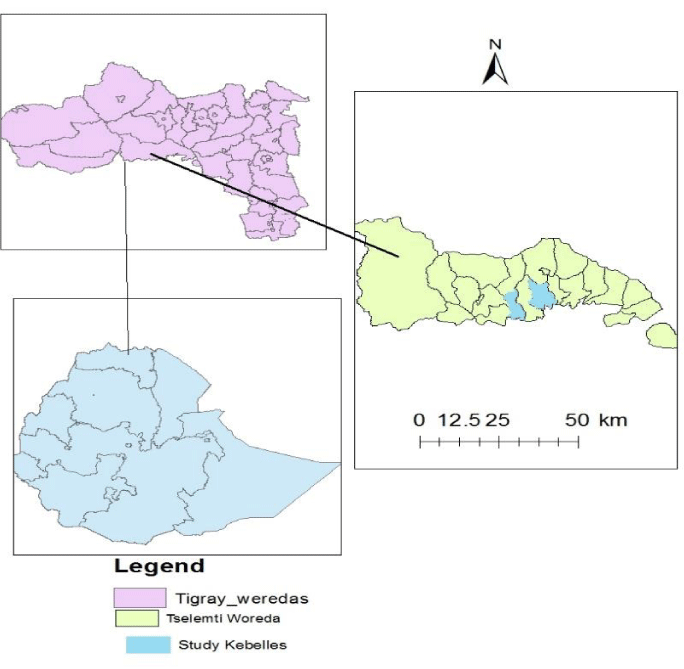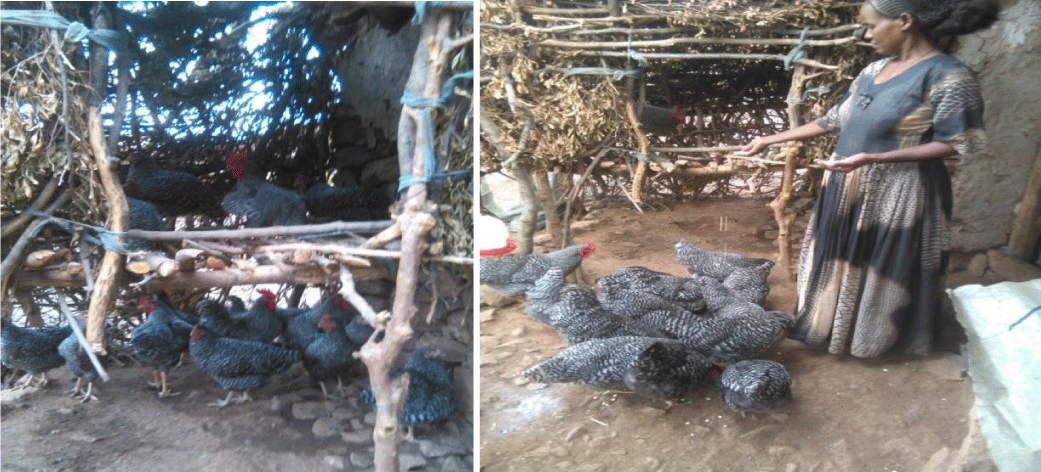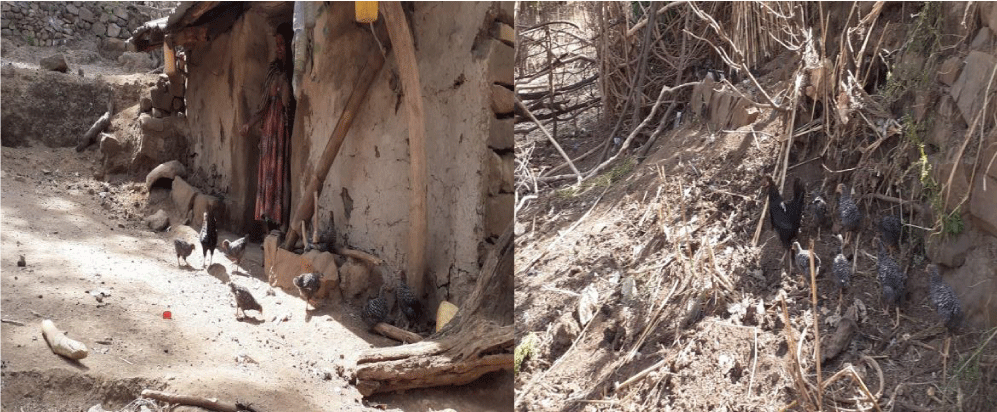International Journal of Veterinary Science and Research
On-farm Evaluation and Demonstration of Koekoek chicken under farmers condition in North western Tigray, Ethiopia
Teklemariam Abadi1*, Desale Gebretsadik2, Kibrom Gebremedhin3, Teklehaimanot Tsigab1, Mulalem Zenebe1 and Daniel Desta4
2Agricultural Economics Researcher, Ethiopia
3Animal Production Researcher, Ethiopia
4Agricultural Economics Researcher, Ethiopia
Cite this as
Abadi T, Gebretsadik D, Gebremedhin K, Tsigab T, Zenebe M, et al. (2020) Evaluation of Insulin Resistance in Overweight and Obese Dogs. Int J Vet Sci Res 6(1): 064-067. DOI: 10.17352/ijvsr.000056The demonstration trail was conducted at Tselemti district northwestern zone of Tigray. Main objective of the study was to compare production performance of the Koekoek chicken. A total of 60 female headed households were included in the study. Twenty Koekoek chicks forty-five days old were delivered to each participant farmers. Quantitative data such as age at first laying, average weight of male and female chicken, average weight of eggs, average number of egg laying per year of the chicken and qualitative data farmers point of view was collected. The collected data was analyzed using the descriptive statistics such as mean and percentage. Based on the result, the average weight for male and female Koekoek were recorded 2.65 kg and 1.82 kg, respectively. While the local chickens were gave an average weight of 2.01kg and 1.3 kg both male and female, at twelve months age, respectively. The breeds produce an average egg production of 176.03 and 81.4 hen-1year-1, respectively both the Koekoek and local. The result from farmers response shows, the breeds are promising in most of the attributes such as, age to egg laying and slaughter, egg laying capacity, hatchability and market price of the egg as compared to the local. But farmers raised that the breeds are poor in brooding, resistant to diseases, in escaping from predators and low market preference of the chicken than the local. By giving strong emphasis on the management aspect like housing, vaccination and feeding, the breed is promising to the area
Introduction
Of the livestock species, poultry appears to be the most suitable and applicable intervention to improve the rural livelihoods; and is important for food security, religious reasons and poverty alleviation in developing countries [1-3]. Nearly all rural and peri-urban families in the developing world keep household poultry [4].
Of the total 59.5 million, poultry population of the country, 90.85%, 4.76% and 4.39% are indigenous, hybrid and exotic breeds, respectively [5]. Local chicken takes the higher percent in the country as well as in the study area of north western Tigray in terms of population. However, the output (egg and meat) is low when compared to exotic chicken. The egg production potential of the local chicken is 30-60 eggs per year per hen with an average of 38 grams egg weight under village management conditions. Whereas, exotic breeds produce around 250 eggs per year per hen with around 60 grams egg weight in Ethiopia [6]. Even though the country’s output obtained from poultry is low due to the highly dominance of local chicken, but the output that obtained from keeping poultry plays a great role in contribution age to income and to dietary diversity of the smallholder producers [7,8].
To improve production and productivity of chicken so as to raise its contribution to the societies, Ministry of Agriculture and Rural Development of the country have been multiplied and disseminated several exotic chicken breeds to the farmers over the last 50 years in the country [9]. Koekoek chicken breed is one of the exotic breed types which are the composite of White Leghorn, Black Australorp and Bared Plymouth Rock [10]. Koekoek breed has a dual purpose, free ranging chicken with laying capabilities as well as a large body size for meat production. In Ethiopia, this breed was demonstrated in different parts of the country including Tigray region. In the study area Tselemti, the Koekoek breed was introduced in 2014 and the breeds was gave promising result in egg production and preferred by different traits such as egg to laying and slaughter, egg hatchability and egg production compared to the local breeds. Therefore, it is important to demonstrate this breed to large farmers of the area.
Objectives
➢ To demonstrate and popularize Koekoek chickens in the area.
➢ To evaluate the production performance of Koekoek chickens in the production system of the area.
➢ To assess the farmers perception towards the introduced chicken breed.
Material and methods
Description of the study area
The trial was conducted at Tselemti district of the northwestern zone of Tigray. Tselemti district is located at 1,172 km North of Addis Ababa, the capital city of Ethiopia and 389km West of Mekelle, capital city of the Tigray regional state and 85km South of Shire. Geographically Tselemti district is located at latitude and longitude of 13o 05’N and 38o 08’ E, respectively, with an altitude ranging from 800-2870 meter above sea level. The district has an annual rain fall of 758mm to1100mm with mean daily temperature that ranges between 16oC to 38oC. The district is known for its mixed farming, crop and livestock in which the crop subsystem dominates over livestock. The major crops of the district are sorghum, maize, finger millet, sesame and rice. From the horticultural crops like banana, mango and papaya and vegetables like hot pepper, onion and tomato are commonly grown in the area. The dominant livestock in the area are cattle, goat, poultry and bee colonies [11].
Selection and Implementation Procedures
The target Kebelle’s Sekota Mariam and Serako is located 20km and 30km respectively from the town of Maitsebri capital city of Tselemti district. The research was conducted from 2018- 2019. A total of 60 female headed interested farmers for executing the research were selected purposively from two Kebelles in consultation with development agent and administration bodies of the respective Kebelles. Then after selection training was given to a total of 67 participants including the district experts, development agents and participant farmers. A total of 1264, forty-five days old chicken, which is 20 chicks per participant farmers was offered with the financial support of Operation Research Project (OR).
Data collection and analysis
Important quantitative dada such as average body weight of male and female chicken, average eggs weight and average number of egg laying day of the chicken; and qualitative data farmers point of view was collected. The collected data was analyzed using the descriptive statistics such as mean and percentage (Figure 1).
Results and discussions
Comparing weight of Koekoek and local chickens at 12 months age the Koekoek Chickens were heavier both male and female in the study area. Similar to this study Dessie and Ogle [12] have reported that the yearly live body weight of Koekoek were 2.6k.g and 1.9k.g for both male and female, but the local breeds have lower body weight 1.9kg and 1.6kg for male and female [12]. Gebreselassie et al. [14] also reported that the Koekoek breeds were reached 2.93kg and 1.99kg both cock and hen at 9-month age, while the local chicken weighted 1.97 and 1.06kg both sex (male and female). Similarly, Koekoek were weighted 2.6kg and 1.9kg both male and female sex on yearly ages at southern Tigray, as reported by Temesgen et al. [15].
Moreover, the average egg production performance of the breeds in the study area was 176 and 81 per year with 45.33 gram and 34.8-gram egg weight for both the Koekoek and local breeds, respectively (Table 1). Inline to this study Tadelle and Fasil [16] found that egg production potentials of Koekoek were 196 eggs/bird/year with an average egg weight of 55.7 gram. Desalew in 2012 [17] also reported that the Koekoek breeds yield 187.04 eggs/hen/year. But Lemlem and Tesfay [18] found that local chicken have the egg production of 40-60 with 43 gram egg weight under village management conditions. On the other hand age at first egg was 26.1 and 29.9 weeks respectively for the Koekoek and local breeds. Similar to this study, Tekalegn et al. [19] was found 26.7 weeks and Gezahegn et al. [20] was reported that 26.86 weeks age at first egg of the Koekoek chicken breeds. But village chickens are characterized by late maturity and the majority of the birds start laying late at 7-8 months of age [21,22].
The sampled farmers were responded that as the Koekoek chickens are more preferred in their body weight, egg production, egg hatchability, egg marketability, and age at egg laying and slaughtering weight as compared to the local chickens. But on the contrary the farmers were less preferred the breeds in the attributes of brooding ability, escape from predators and chicken marketability as compared to the local chicken (Table 2) (Figures 2,3).
The main constraints faced in Koekoek chicken production in the area is diseases followed by predators. The predators include such as snake and eagle. Mostly this could due to the poor management of the farmers and low vaccination access to the chickens.
Conclusion and recommendations
In the study area Koekoek chicken has given higher egg production, body and egg weight as compared to the local breed. The result from farmers response also shows the breeds are promising in most of the attributes such as, age to egg laying and slaughter, egg laying capacity, egg hatchability, and market price of the egg as compared to the local chicken. But farmers were less preferred that the breeds in traits brooding, resistant to diseases, escaping from predators and market preference than the local breed. Farmers becomes interested due to the breed could effectively managed for both egg and meat production under scavenging condition with little supplementation as compared to other improved breeds. By giving strong emphasis on the management aspects like housing, watering, feeding and vaccination; the breeds are promising to the area to enhance the meat and egg production of the poultry. Therefore, the breeds have to be scaled to large farmers of the area.
The authors would like to thanks the Operational Research Project (OR) for the budget grants. Special thanks also go to TARI/Shire Maitsebri Agricultural Research Center, researchers for their unlimited support. Farmers, experts and development agents of Tselemti district are also deeply acknowledged for their support in conducting the research.
- Simainga S, Moreki JC, Band F, Sakuya N (2011) Socioeconomic Study of Family Poultry in Mongu and Kalabo Districts of Zambia. Livestock Research for Rural Development 23. Link: https://bit.ly/2XqlFq4
- Gueye EF (2005) Developments in family poultry production and health. World's Poultry Sci J 61: 39-46.
- Salam K (2005) Improvement of village chicken production in a mixed (chicken ram) farming system in Burkina Faso. Ph.D. Thesis. Wageningen Institute of Animal Sciences, Animal Nutrition Group. Wageningen University, the Netherlands 125. Link: https://bit.ly/2XpMLxD
- FAO (Food and Agriculture Organization) (2014) Family poultry development-Issues, opportunities and constraints. Animal Production and Health Working Paper. No. 12. Link: https://bit.ly/2U4by8h
- CSA (Central Statistical Authority) (2015/16). Report on livestock and livestock characteristics (private peasant holdings). Agricultural Sample Survey; Federal Democratic Republic of Ethiopia, Addis Ababa Ethiopia.
- Alganesh T, Matewos B, Gizaw K (2003) Survey on traditional livestock production systems in Manasibu district of West Wellega, Ethiopia. Proceedings of the 11th Annual Conference of the Ethiopian Society of Animal Production, Addis Ababa, Ethiopia.
- Aklilu H, Almekinders CJM, Van der Zijpp AJ. (2007) Village poultry consumption and marketing in relation to gender, religious festivals and market access. Tropical Animal Health and Production 39: 165-168. Link: https://bit.ly/2XNspxe
- Kryger KN, Thomsen KA, Whyte MA, Dissing M (2010) Small holder poultry production livelihoods, food security and socio cultural significance. Small holder poultry production, Food and Agricultural Organizations of the United Nations, Rome Italy76. Link: https://bit.ly/3dsDc6u
- Solomon D (2008) Poultry sector country review on HPAI prevention and control strategies in Eastern Africa, Food and Agriculture Organization of the United Nations.
- Grobbelaar J, Sutherland B, Molalakgotla N (2010) Egg production potentials of certain indigenous chicken breeds from South Africa. Animal Genetic Resources 25-32. Link: https://bit.ly/2MoZZ7k
- Office of Agriculture and Rural Developments of the Tselemti Woreda (2018) Unpublished annual report.
- Tadelle D, Ogle B (2001) Village poultry production system in the central high lands of Ethiopia. Trop Anim Health Prod 33: 521-537. Link: https://bit.ly/3eGQ9d9
- Matbo MMA (1999) Improving the health and productivity of the rural chickens in Africa. 1-7. Poultry as a tool in poverty eradication and promotion of gender equality. Proceedings of a Workshop. Report of phase 1 of an Enreca sponsored project. Department of Veterinary Medicine and Public Health, Sokoine University of agriculture. Morogoro. Tanzania.
- Gebreselassie G, Meseret R, Mulalem Z, Hailay H, Minister B, et al. (2015) Comparative production performance evaluation of exotic and indigenous chickens under farmers management practice in Tigray, Northen Ethiopia. Scientific J Animal Sci 4: 181-186. Link: https://bit.ly/2MldPYi
- Tesfay T, Kidane H, Atsebha T, Teklu T, Wayu S, et al. (2018) Popularization of Koekoek poultry breed for enhancing livelihood of poor households: A case of Southern Tigray, Ethiopia. J Agric Biotechnol Sustainable Develop 10: 164-169. https://bit.ly/2yWnUrH
- Dessie T, Getachew F (2016) The Potchefstroom Koekoek breed, African Chicken Genetic Gains The international Livestock Research Institute (ILRI). Link: https://bit.ly/2AtgSLF
- Desalew T (2012) Management practices, productive performances and egg quality traits of exotic chickens under village production system in east Shewa, Ethiopia, M. S. thesis, Addis Ababa Univ, Debre Zeit, Ethiopia. Link: https://bit.ly/2XX0mLK
- Lemlem A, Tesfaye Y (2010) Performance of exotic and indigenous poultry breeds managed by smallholder farmers in northern Ethiopia. Livestock Research for Rural Development 22: 133. Link: https://bit.ly/2zTxfB5
- Yirgu T, Tesfaye E, Amare A, Alewi M (2019) On-Farm Evaluation and Demonstration of Dual Purpose Chicken“Potchefstroom koekoek” Technology Packages in Sidama Zone, Ethiopia, World Journal of Agricultural Sciences 15: 317-323. Link: https://bit.ly/2XRragx
- Gezahegn T, Ashenafi M, Berhan T (2016) Evaluation of the Egg Production Performance in Bovans Brown and Koekoek Chicken Breeds under Varied Seasons and Feeding Regimes in South Wollo Zone, Ethiopia. Global Veterinaria 17: 318-324. Link: https://bit.ly/2XLUg0A
- Gezahegn T (2005) Investigations into technical interventions to improve rural chicken production system in South Wollo zone, Ethiopia, M. S. thesis, Alemaya Univ, Ethiopia.
- Lulseged Y (1998) A study on the production systems of indigenous and improved poultry in the rural areas of North Wollo, M. S. thesis, Alemaya Univ, Ethiopia.
Article Alerts
Subscribe to our articles alerts and stay tuned.
 This work is licensed under a Creative Commons Attribution 4.0 International License.
This work is licensed under a Creative Commons Attribution 4.0 International License.




 Save to Mendeley
Save to Mendeley
